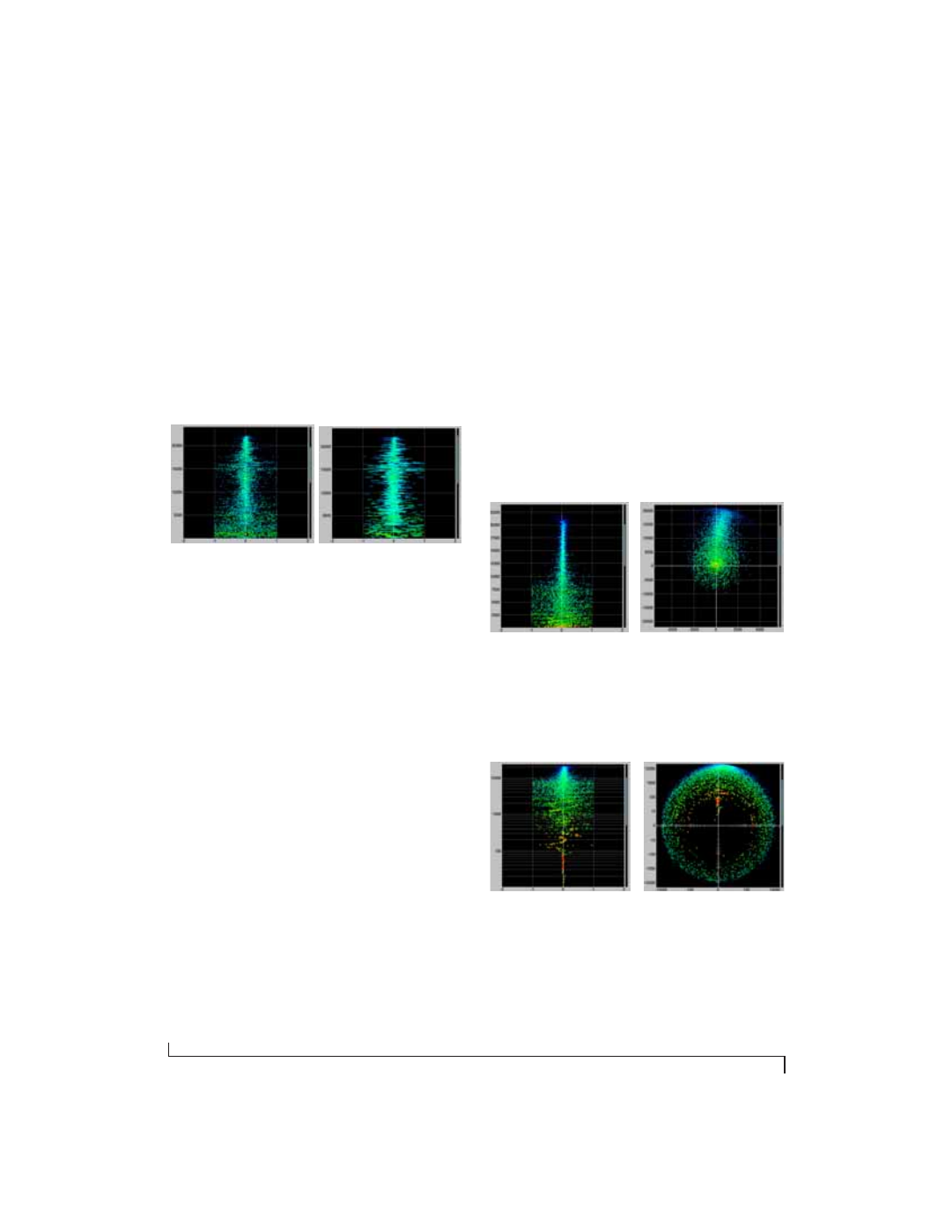MOTU UltraLite-mk3 - Hybrid FireWire/USB 2.0 Audio & MIDI Interface User Manual
Page 98

C U E M I X F X
98
A/B (stereo audio channels)
The
View
section (Figure 10-47) displays the pair
of input or output audio channels you are viewing.
See “Choosing a channel pair to display” above.
Line/Scatter
Choose either
Line
or
Scatter
from the menu in the
View section (Figure 10-47) to plot each data point
as either a single pixel or as a continuous line that
connects each frequency data point to the next, as
shown below in Figure 10-42.
Figure 10-48: The same Phase Analysis displayed in Line versus
Scatter mode.
☛
Line mode is significantly more CPU intensive
than Scatter. You can reduce Line mode CPU
overhead for the Phase Analysis display by
increasing the Floor filter and reducing the Max
Delta Theta filters (see “Filters” on page 99).
Color/Grayscale
In
Color
mode (Figure 10-47) signal amplitude is
indicated by color as follows: red is loud and blue is
soft. In grayscale mode, white is loud and gray is
soft.
Linear/Logarithmic
Choose either
Linear
or
Logarithmic
from the
menu in the View section (Figure 10-47) to change
the scale of the frequency axis. In rectangular
coordinates, the vertical axis represents frequency,
and in polar coordinates, the radius from the
center is frequency. With a linear scale, frequencies
are spaced evenly; in a logarithmic scale, each
octave is spaced evenly (frequencies are scaled
logarithmically within each octave).
Linear is better for viewing high frequencies;
logarithmic is better for viewing low frequencies.
Rectangular/Polar
Choose either
Rectangular
or
Polar
from the menu
in the View section (Figure 10-47) to control how
audio is plotted on the Phase Analysis grid.
Rectangular
plots the audio on an X-Y grid, with
frequency along the vertical axis and phase
difference on the horizontal axis.
Polar
plots the
data on a polar grid with zero Hertz at its center.
The length of the radius (distance from the center)
represents frequency, and the angle (theta)
measured from the +y (vertical) axis represents the
phase difference in degrees.
Figure 10-49: Rectangular versus Polar display (with a linear plot).
Above, Figure 10-49 shows Rectangular versus
Polar display with a Linear plot. Below,
Figure 10-50 show s the same displays (and the
same data) with a Logarithmic plot:
Figure 10-50: Rectangular versus Polar display with a logarithmic
plot.
Axes
The
Axes
control (Figure 10-47) sets the opacity of
the grid displayed in the graph, from 100% (fully
visible) down to 0% (fully hidden).